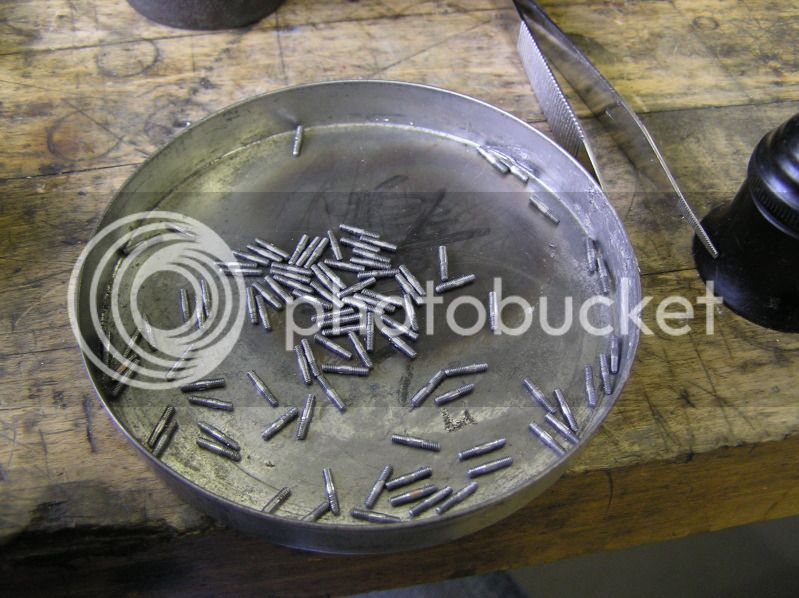Cheshire Steve
Well-Known Member
- Joined
- Mar 28, 2009
- Messages
- 69
- Reaction score
- 1
I now have two split BA dies in which I have managed to snap off short stubs of thread, which do not protrude, one brass another steel. These are both good quality dies so I want to extract the stubs. One is 6BA, another 8BA. I was wondering if I can sneak a slitting saw in through the split in the split-die and remove enough metal to collapse the core a little. I wonder if anyone else has any tips.
As regards not doing it again - I am thinking of making a small hand threading jig, that will allow me to use the hold-anything capabilty of my lathes ER25 chuck, but will allow me to turn the die/tap by hand in a bored holder held on the top slide. The same jig should facilitate tapping too, as it will give me the accurate alignment I want plus exposing the squared end of the tap.
As regards not doing it again - I am thinking of making a small hand threading jig, that will allow me to use the hold-anything capabilty of my lathes ER25 chuck, but will allow me to turn the die/tap by hand in a bored holder held on the top slide. The same jig should facilitate tapping too, as it will give me the accurate alignment I want plus exposing the squared end of the tap.







